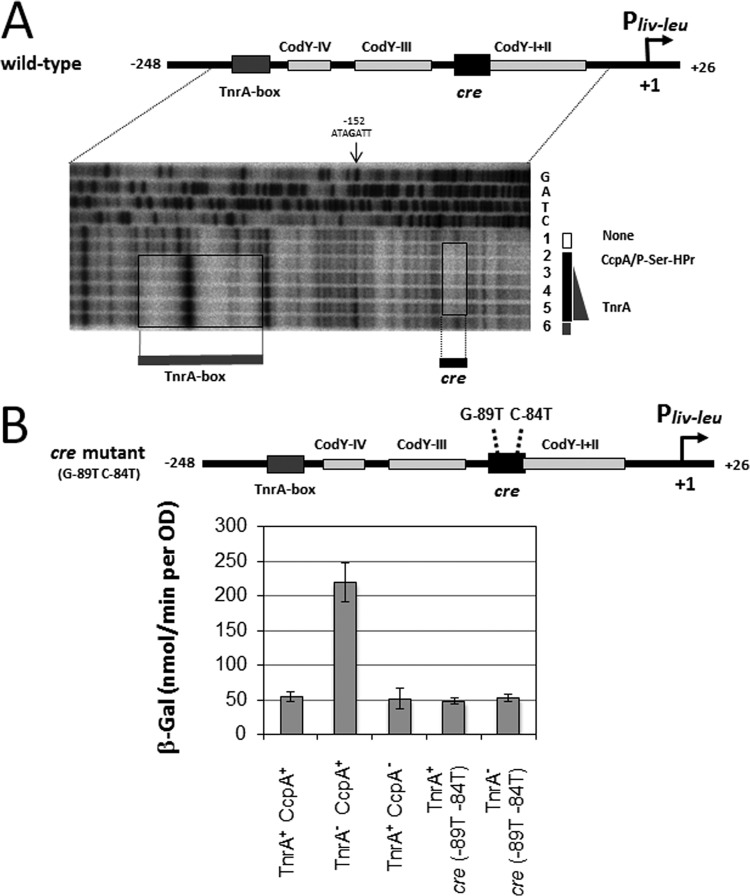FIG 6.
DNase I footprinting analysis of simultaneous binding of the complex of CcpA and P-Ser-HPr to cre with that of TnrA to its box. The footprinting experiments were carried out as described in the text. (A) The probe DNA (wild type) was the ilv-leu promoter fragment (nt −248/+26). The gel is a DNase I footprint of the 5′-end-labeled coding strand. Simultaneous binding of CcpA/P-Ser-HPr to cre and TnrA to its site was carried out at constant concentrations of CcpA (3.0 μM) and P-Ser-HPr (3.7 μM). Lane 1 contained no protein. Lanes 2, 3, 4, and 5 contained 0, 50, 100, and 200 nM TnrA. Lanes G, A, T, and C contained the products of the corresponding sequencing reactions performed with the same primers as those used for the probe preparation. The protected areas of the cre sequence and TnrA box are enclosed in boxes. (B) Cells of strains FU676, FU679 (tnrA::Tn917), FU731 (ccpA::neo), FU722 [cre (G-89T C-84T)], and FU724 [tnrA::Tn917 cre (G-89T C-84T)] carrying the lacZ fusion of the Pilv-leu region (nt −248/+26) were grown to an OD600 of 0.5 under nitrogen-limited conditions, and then β-Gal activity in crude cell extracts was measured.

